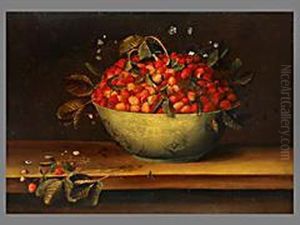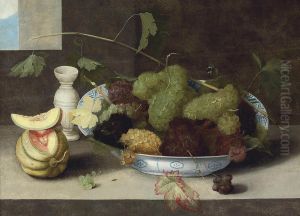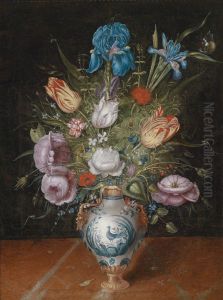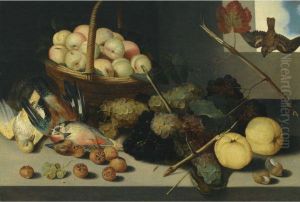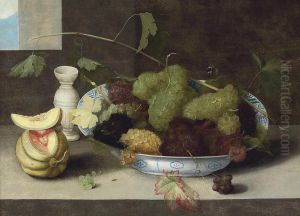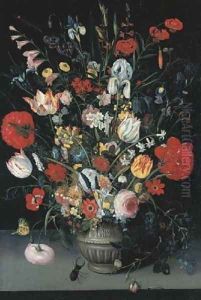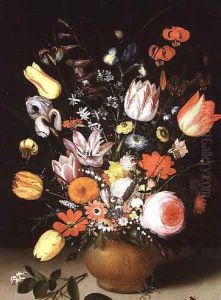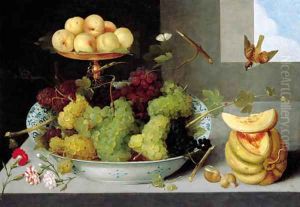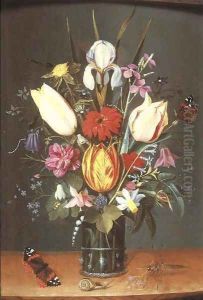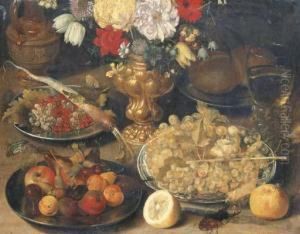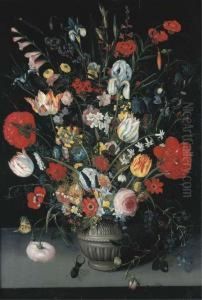Peter Paul Binoit Paintings
Peter Paul Binoit was a German still life painter active during the early 17th century, known for his detailed and vibrant compositions. Born around 1590, Binoit's exact birthplace is not well documented, but he is thought to have been active in the region around Frankfurt am Main. There is little known about his early life and training, but it is believed that he might have been influenced by Flemish and Dutch still life traditions, which were prominent during that time.
Binoit’s work is characterized by its meticulous attention to detail and the rich, luminous quality of the objects he depicted. He often painted on a small scale, focusing on themes like flower bouquets, fruit arrangements, and vanitas still lifes, which reflected on the transience of life. His compositions were carefully constructed, with a strong sense of order and harmony, and they typically featured a wide range of textures and surfaces that showcased his technical skill.
Despite his talent, Peter Paul Binoit did not gain the same level of fame as some of his contemporaries, such as Jan Brueghel the Elder or Pieter Claesz. Nevertheless, his paintings were collected and appreciated by connoisseurs of the period. Binoit's works are now considered important contributions to the still life genre, providing insight into the aesthetic preferences and material culture of his time.
Binoit died in 1632, leaving behind a body of work that continues to be studied and admired for its beauty and historical value. Today, his paintings can be found in several museum collections and are sought after by collectors of early European still life paintings.









